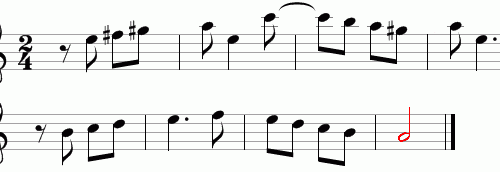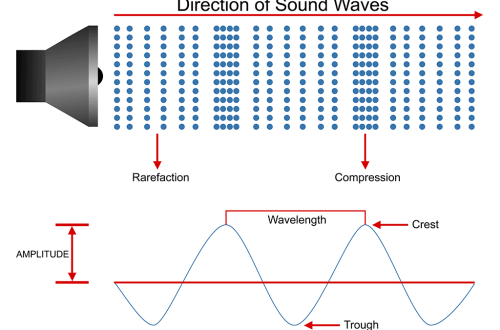
Medieval frets
Contents
A bit of history.
Music, like any other science, does not stand still, it develops. The music of our time is quite different from the music of the past, not only “by ear”, but also in terms of the modes used. What do we currently have on hand? Major scale, minor… is there anything else that is equally widespread? Not? The abundance of commercial music, easy to hear, brings the minor scale to the fore. Why? This mode is native to the Russian ear, and they use it. What about Western music? The major mode prevails there – it is closer to them. Okay, so be it. What about oriental melodies? We took the minor, we “gave” the major to the Western peoples, but what is used in the east? They have very colorful melodies, not to be confused with anything. Let’s try the following recipe: take the major scale and lower the 2nd step by half a step. Those. between I and II steps we get half a tone, and between the II and III steps – one and a half tones. Here is an example, be sure to listenhim :

Figure 1. Reduced stage II
Above the C notes in both measures, the wavy line is vibrato (to complete the effect). Did you hear oriental tunes? And only the second step is lowered .
Medieval frets
they are also church modes, they are also Gregorian modes, they represent an alternation of steps of the C-major scale. Each fret contains eight steps. The interval between the first and last steps is an octave. Each mode consists only of the main steps, i.e. no accident marks. The modes have a different sequence of seconds due to the fact that each of the modes begins with different degrees of C major. For example: the Ionian mode begins with the note “to” and represents C major; the Aeolian mode begins with the note “A” and is an A minor.
Initially (IV century) there were four frets: from the note “re” to “re”, from “mi” to “mi”, from “fa” to “fa” and from “sol” to “sol”. These modes were called the first, second, third and fourth. The author of these frets: Ambrose of Milan. These modes are called ” authentic”, which translates as “root” modes.
Each fret consisted of two tetrachords. The first tetrachord began with the tonic, the second tetrachord began with the dominant. Each of the frets had a special “final” note (this is “Finalis”, about it a little lower), which ended the piece of music.
In the 6th century, Pope Gregory the Great added 4 more frets. His frets were below the authentic ones by a perfect fourth and were called “plagal”, which means “derivative” frets. Plagal modes were formed by transferring the upper tetrachord down an octave. The finalis of the plagal mode remained the finalis of its authentic mode. The name of the plagal mode is formed from the name of the authentic mode with the addition of “Hypo” to the beginning of the word.
By the way, it was Pope Gregory the Great who introduced the letter designation of notes.
Let us dwell on the following concepts used for church modes:
- Finalis. The main tone of the mode, the final tone. Do not confuse with tonic, although they are similar. The finalis is not the center of gravity of the remaining notes of the mode, but when the melody ends on it, it is perceived in the same way as the tonic. The finale is better called the “final tone”.
- Repercus. This is the second fret support of the melody (after the Finalis). This sound, characteristic of this mode, is the tone of repetition. Translated from Latin as “reflected sound”.
- Ambitus. This is the interval from the lowest sound of the mode to the highest sound of the mode. Indicates the “volume” of the fret.
Table of church frets
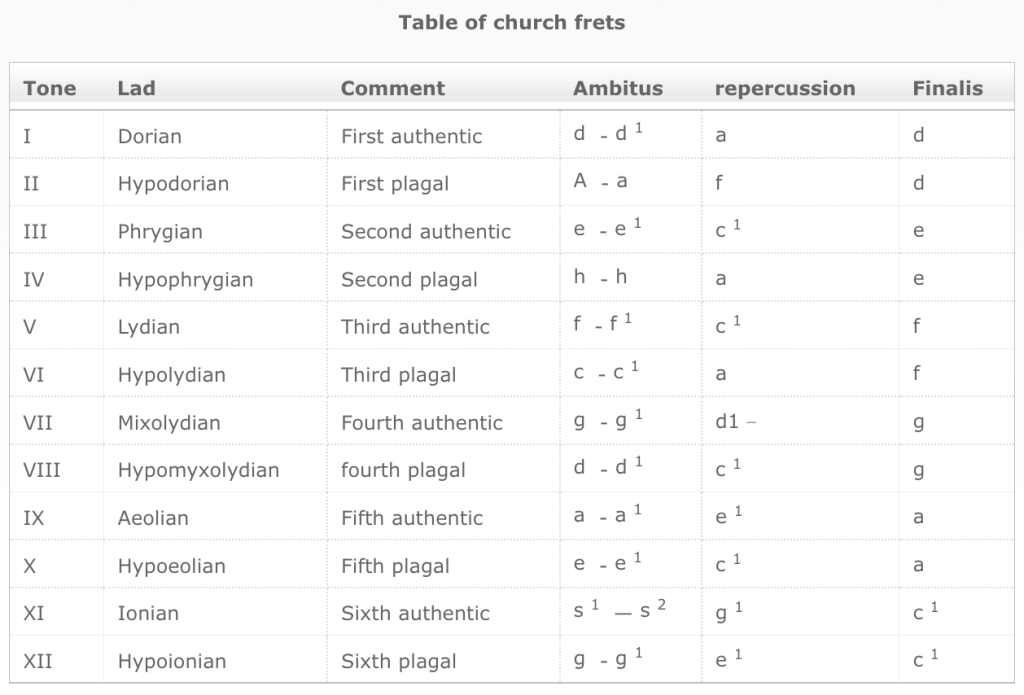
It with
Each church mode had its own character. It was called “ethos”. For example, the Dorian mode was characterized as solemn, majestic, serious. A common feature of church modes: tension, strong gravity are avoided; eminence, calmness are inherent. Church music should be detached from everything worldly, it should calm and uplift souls. There were even opponents of the Dorian, Phrygian and Lydian modes, as pagan. They opposed romantic (wailing) and “coddled” modes, which carry debauchery, causing irreparable damage to the soul.
The nature of the frets
What is interesting: there were colorful descriptions of modes! This is really an interesting point. Let us turn for descriptions to the book by Livanova T. “History of Western European Music until 1789 (Middle Ages)”, chapter “Musical Culture of the Early Middle Ages”. Quotes are given in the table for the modes of the Middle Ages (8 frets):
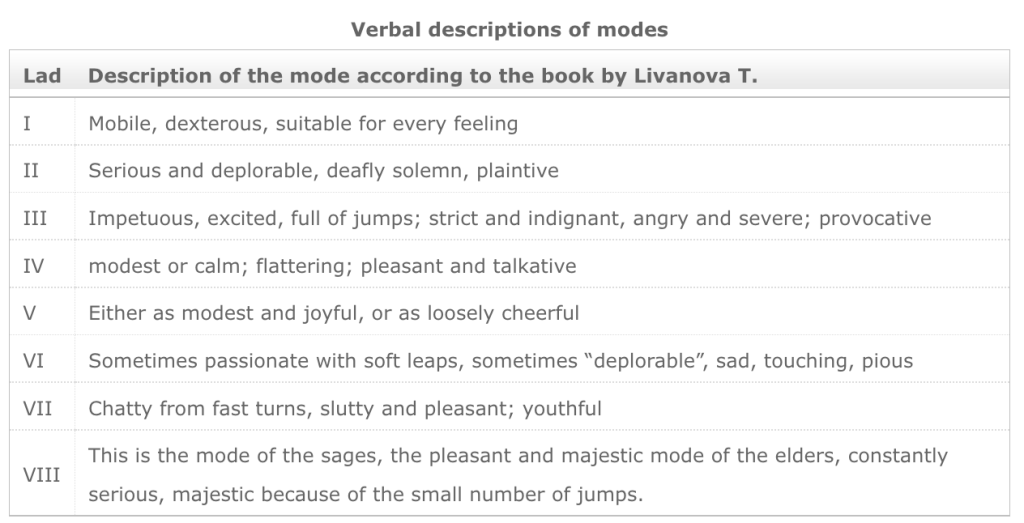
Frets of the Middle Ages on the stave
We indicate the location of the notes on the stave for each fret. Repercussion notation:  , finalis notation:
, finalis notation: ![]() .
.
Medieval frets on a modern stave
The system of medieval modes can be shown in some form on a modern stave. The following was literally said above: Medieval “modes have a different sequence of seconds due to the fact that each of the modes begins with different degrees of C major. For example: the Ionian mode begins with the note “to” and represents C major; the Aeolian mode begins with the note “A” and is an A-minor. This is what we will use.
Consider C major. We alternately take 8 notes from this scale within one octave, each time starting from the next step. First from stage I, then from stage II, etc.:
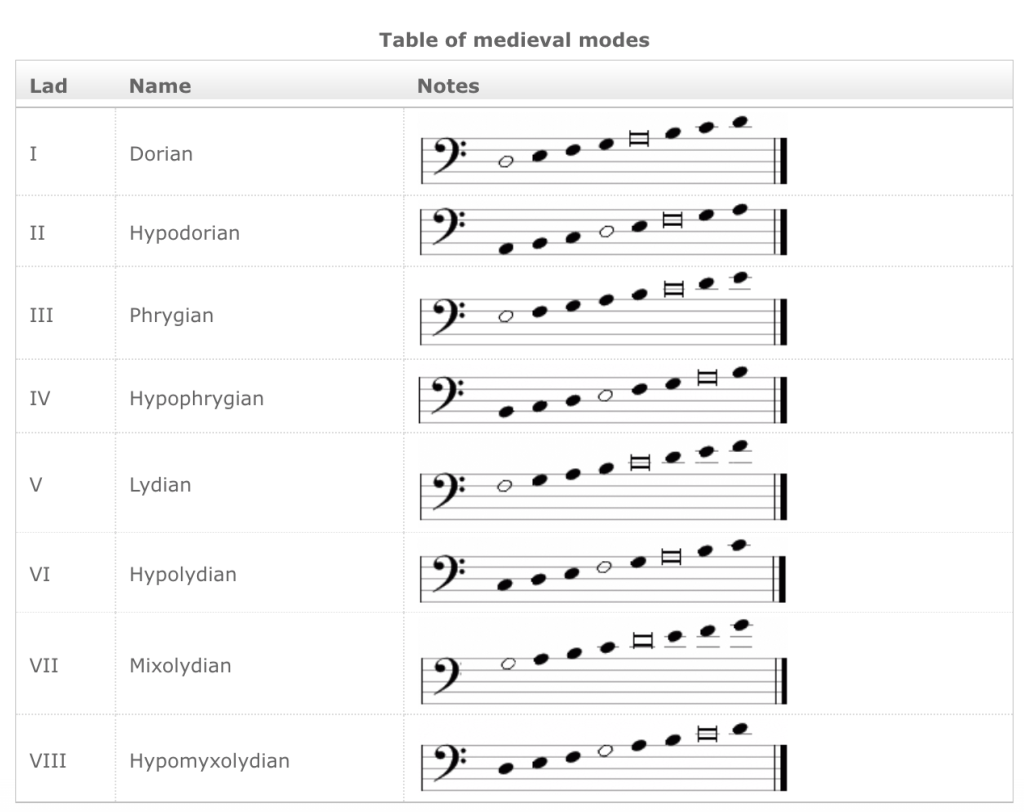
Results
You plunged into the history of music. It’s useful and interesting! Music theory, as you have seen, used to be different from the modern one. In this article, of course, not all aspects of Medieval music are considered (comma, for example), but some impression should have been formed.
Perhaps we will return to the topic of Medieval music, but within the framework of other articles. This article, we believe, is overloaded with information, and we are against giant articles.



